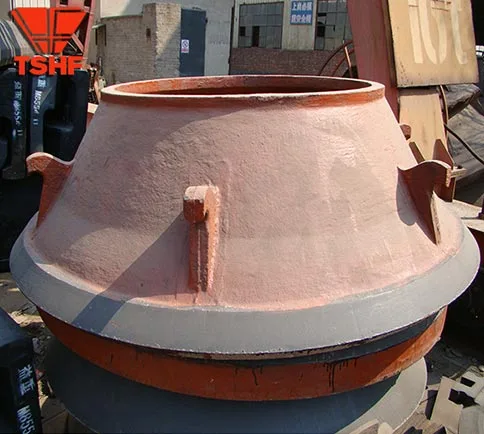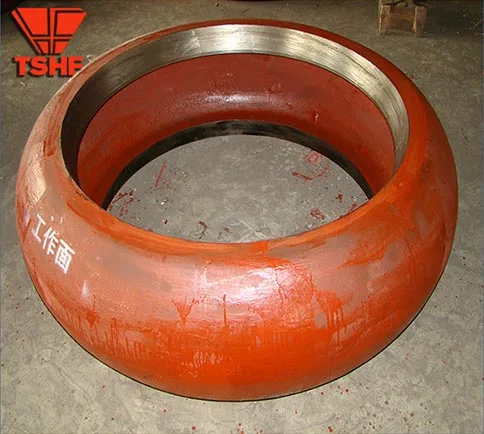Table of Contents
Introduction
Ever wondered how your cement plant can grind more efficiently? A coal mill in cement plant plays a vital role—you need consistent mill performance, reliable wearing castings, and proactive maintenance to keep production smooth. Let’s explore how you can boost mill efficiency, minimize downtime, and ensure peak operation.

What is a coal mill in cement plant and why it matters
A coal mill in cement plant pulverizes coal into fine powder for combustion. Its performance affects clinker quality, energy consumption, emission control, and overall plant productivity. Poor mill efficiency can lead to higher fuel costs, unstable temperatures, and increased maintenance—so attention here pays off big time.
Key components and wearing parts of a coal mill
- Grinding rollers and table: Core wear parts; their condition directly impacts fineness and throughput.
- Classifiers: Control particle size; inefficient classifiers increase recirculation load.
- Roller shell and tire segments: Subject to abrasion—change them before over-wear affects grinding.
- Hydraulic systems: Ensure stable pressure; leaks or weak response reduce grinding force.
- Gearboxes and couplings: Vibrations or misalignment here lead to inefficiencies or big breakdowns.
Common inefficiencies and how to address them
Worn rollers or shells
Surface wear reduces grinding pressure, leading to coarse output and higher energy use. Regular measurement of shell thickness and shell greasing can maintain consistent performance.
Poor classifier operation
Inflexible classifier causes particle size drift and mill overloading. Adjust vane angles and monitor pressure drop for best operational control.
Inadequate sealing or air leakage
Seals protect against air leaks that mess with mill internal circulation. Inspect seal integrity regularly to maintain efficiency.
Hydraulic system issues
Lower hydraulic pressure equals reduced grinding force. Use sensors and pressure gauges to diagnose issues early and avoid manual inspection.
Mid-article table: Typical coal mill wearing parts and inspection intervals
| Wearing Part | Inspection Interval | Performance Impact if Delayed | Recommended Action |
|---|---|---|---|
| Grinding roller shell | Monthly (visual) | Reduced pressure → lower throughput | Rebuild or rotate shell if wear >5 mm |
| Roller tires | Quarterly | Vibration, vibration→ poor product quality | Replace tires at average wear depth |
| Table liners | Every 3 months | Increased power usage, uneven grinding | Exchange or rebuild based on wear profile |
| Classifier blades | Every 6 months | Poor grading → over-fine or coarse output | Adjust angles or replace dull blades |
| Seals and bearings | Monthly | Air leakage → unstable load, energy loss | Seal replacement, bearing lubrication |
| Hydraulic oil & filters | Quarterly | Lower pressure, reduced grinding force | Filter change, oil top-up |
| Gearbox oil & alignment | Semi-annually | Gear wear → breakdown risk | Oil change, alignment check, vibration audit |
How optimized maintenance boosts efficiency
A proactive maintenance routine, focusing on replacing wear parts before failure, can raise mill availability by up to 15%. According to industrial analysis, unplanned downtime on coal mills can drain 5–10% of annual output if core parts aren’t managed. By scheduling roller replacement and classifier tuning in alignment with production plans, you avoid interruptions and energy waste.
Best practices during installation and commissioning
- Precision alignment: Proper shaft coupling and roller-to-table alignment avoids vibration wear.
- Initial no-load testing: Ensure consistent mill torque before introducing coal.
- Sealing verification: Pressure-test mill seals to prevent unchecked air infiltration.
Operational tips for long-term reliability
Grind control monitoring
Track particle size distribution, mill differential pressure, and fan power. These signals show when classifier or roller wear reduces efficiency.
Vibration diagnostics
Install vibration sensors on bearings, gearboxes, and rollers. Early detection of misalignment or imbalance prevents major damage.
Consistent sampling and inspection
Monthly checks with ultrasonic thickness measurement on rollers, and borescope inspections of classifier internals catch hidden wear.
Lubrication schedule
A deficit in grease supply can triple bearing wear. Use centralized greasing systems to maintain reliable lubrication.
Sustainability and cost savings
Well-maintained mills consume up to 10% less fuel and emit fewer particulates. Extending component service life through rebuilding saves up to 40% in replacement costs compared to brand-new parts.

Advanced upgrades and monitoring
- Condition-based monitoring: Track vibration, temperature, and pressure to shift from reactive to predictive maintenance.
- Automation integration: Real-time feedback loops adjust classifier settings to optimize grinding efficiency.
- Material tracking: Tying raw coal properties to mill performance identifies when coal quality changes need parameter tuning.
Conclusion
Your coal mill in cement plant is a linchpin of production. By focusing on wear parts like rollers, shells, tires, classifiers, and seals—and pairing them with thoughtful maintenance and sensor integration—you can significantly boost efficiency, reduce costs, and maximize uptime.
FAQ
How often should grinding rollers be replaced?
Inspect monthly; replace when shell wear exceeds 5 mm or when vibration/power consumption rises—usually every 6–12 months.
Can classifier blades be adjusted instead of replaced?
Yes. Fine-tuning angles can restore classification performance; replace blades when wear exceeds manufacturer’s tolerance (~10 mm).
What sensors are essential on a coal mill in cement plant?
Recommended: vibration sensors on rollers & bearings, pressure gauges, classifier differential pressure sensors, and hydraulic pressure monitors.
How much efficiency gain comes from managing wear parts?
Properly maintained mills save around 5–10% in energy costs and reduce unplanned outages by 15–20%.
Does Huifu offer on-site service?
Yes—Huifu delivers wear part processing, site installation, commissioning, and ongoing maintenance support tailored to your operational needs.

